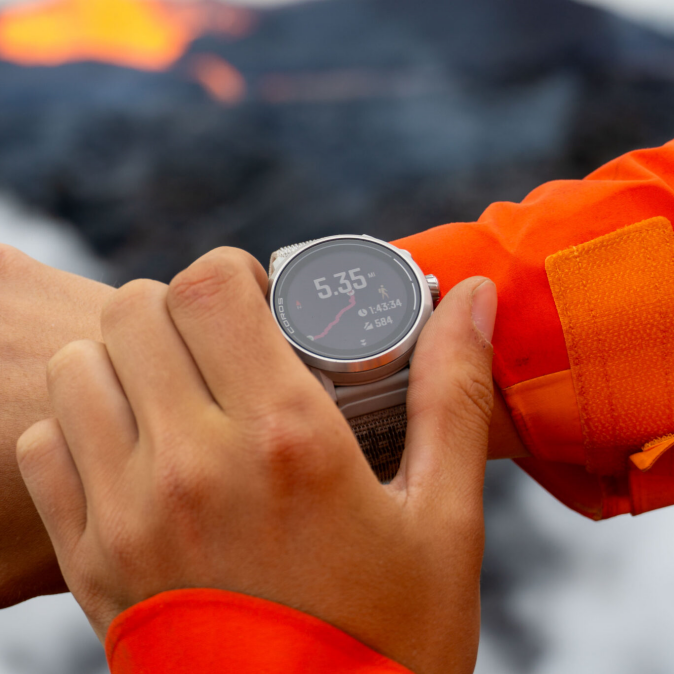Few smartwatches such as Veepoo's RIG can accurately measure the human body's health indicators, in this article we will briefly talk about and introduce some of the major health monitoring techs that are equipped on advanced health smartwatches. These methods of non-invasive heart rate measurement have been commercially used by wearable devices or have the potential to be commercially available: photoelectric volume (PPG), electrocardiogram (ECG).
PPG is a technical term for shining light into the skin and measuring the amount of light that is scattered by blood flow. Essentially, PPG works as follows: The sensor first emits a certain wavelength of light (typically green light to measure heart rate), and then the intensity of the reflected or transmitted light is measured by a photodiode. Skin, bones, meat, fat, etc. are fixed in the human body, and so is the volume of capillaries and veins. This is why the intensity of the reflected light is relatively fixed. Only the vascular volume A fluctuates and changes with the pulse, and the reflection of the blood from this part to the light fluctuates as well. We're primarily interested in this fluctuation as it is a measure of our pulse, which is the same as our heart rate. At present, the photoelectric volume (PPG) method is the most widely adopted. One of the biggest advantages of PPG method is that there is very low contact required between the sensor and the skin, even if the sensor and the skin are so loose that there is no direct contact, and as a result, there is an air gap between the sensor and the skin, the sensor still gets a signal-to-noise ratio which is relatively ideal. Wearable devices that can be worn loosely are very popular to users, since sensor that are put too much pressure on skin will cause discomfort to people.
When determining the heart rate, electrocardiogram (ECG) is an accurate method to use. It is the top choice when determining heart rate measurements. It is primarily used in some heart rate measurement products used during strenuous activity, such as a heart rate belt.
To pump blood to the trunk, the sinoatrial node of the heart contracts and relaxes rhythmically. A control signal is an electrical signal that spreads gradually to the surface of the body and can be measured with electrodes on the skin (human nerve signals are all expressed as electrical signals on nerves). A heart beat is represented by this rhythm. In addition, the ECG signal can also provide a lot of reference information for the doctor's diagnosis. In the past, it was mainly used in professional medical fields. It can be used to help diagnose various heart diseases, such as myocardial ischemia, myocardial infarction, etc., or the pacing conditions of patients with artificial heart disease. , To help doctors better understand the patient’s heart health, so as to make accurate and effective treatments in a timely manner.
From a professional point of view, smart wearable devices are very important for detecting arrhythmias and monitoring the electrical activity of the heart. However, for the diagnosis of symptoms, professional testing equipment and professional medical personnel are still needed. At present, most of the wearable ECG monitoring devices purchased by ordinary people are single-lead ECGs, which are susceptible to interference from various external signals, such as poor skin contact and surrounding electronics. Equipment interference, etc., cause the accuracy of diagnosis to decrease. Therefore, from a professional perspective, the diagnosis of abnormal cardiac electrical activity requires more professional equipment and medical personnel. For example, for atrial fibrillation screening, European cardiology recommends wearable ECG Equipment, but the diagnosis of atrial fibrillation requires a standard 12-lead ECG or a non-interference single-lead ECG with a recording time of more than 30 seconds."
However, smartwatch monitoring device can obtain user's own ECG data to assess whether the heart is healthy. Or there may be symptoms or risk factors of heart discomfort, so this device is needed for monitoring and data collection. The second situation is to use this type of equipment for follow-up and monitoring of disease treatment effects. Some people need to use this type of equipment to monitor the effectiveness of treatment and whether the disease has recurred after receiving drugs or surgery for cardiovascular disease.
Wearable smart ECG devices are an important method for the early diagnosis of heart disease in the future. It is the future direction of medical development to reduce the disability and fatality rate of cardiovascular diseases. It is still necessary to communicate with professionals in a timely and effective manner to ensure the correct interpretation of recorded data and avoid misdiagnosis or missed diagnosis.
Reference: www.veepoo.net

